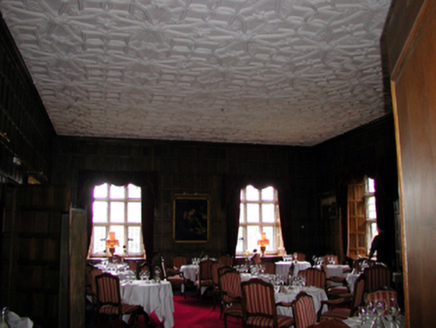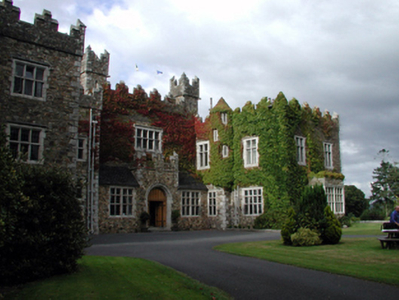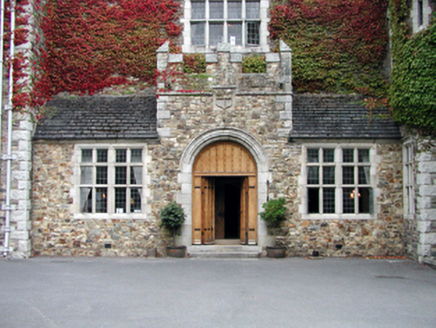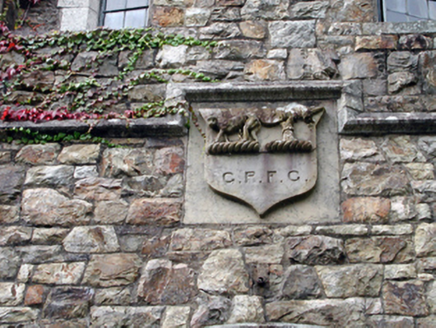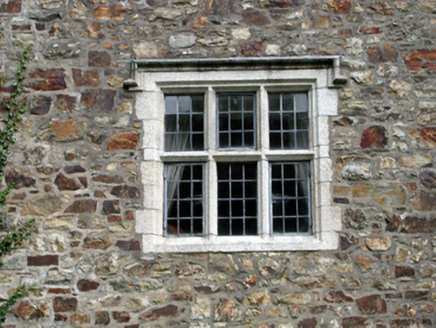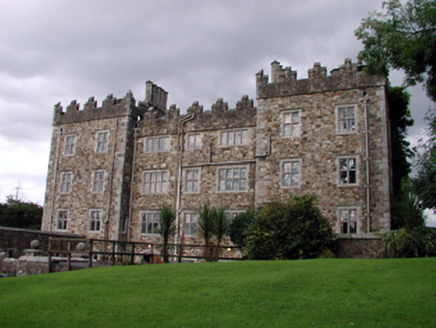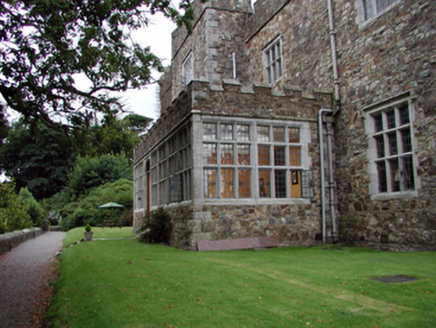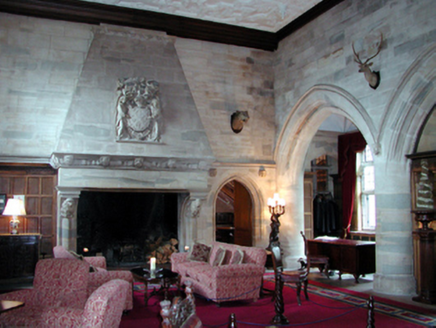Survey Data
Reg No
22901002
Rating
National
Categories of Special Interest
Archaeological, Architectural, Artistic, Historical
Previous Name
Little Island Castle
Original Use
House
In Use As
Hotel
Date
1890 - 1900
Coordinates
264288, 111660
Date Recorded
18/08/2003
Date Updated
--/--/--
Description
Detached nine-bay two- and three-storey over basement Gothic-style house, built 1895, on a quasi H-shaped plan incorporating fabric of earlier house, pre-1845, comprising three-bay two-storey entrance tower incorporating fabric of medieval castle, pre-1645, with three-bay single-storey lean-to projecting entrance bay to ground floor having single-bay single-storey flat-roofed higher porch to centre, two-bay three-storey split-level advanced flanking bay to left (west), two-bay three-storey projecting end bay to left (west) having two-bay three-storey side (west) elevation (continuing into three-bay three-storey side (west) elevation with two-bay three-storey over part-raised basement return tower to north), and single-bay three-stage engaged flanking turret to right (east) on a square plan extending into two-bay two-storey projecting end bay to right (east) with single-bay single-storey box bay window to centre ground floor, and single-bay two-storey side (east) elevation (continuing into single-bay two-storey breakfront to side (east) elevation with three-bay single-storey flat-roofed conservatory overlapping with two-bay two-storey return tower to north-east). Now in use as hotel. Roofs to main block and to towers not visible behind parapets with cut-stone chimney stacks (some paired cut-stone diagonal chimney stacks), and cast-iron rainwater goods having decorative castellated hoppers, bas-relief detailing, and wrought iron strap hinges. Lean-to rough-hewn slate roof to entrance bay on moulded cut-stone course. Cut-stone conical roof to engaged flanking turret. Flat roofs to box bay window and to conservatory not visible behind parapets. Random rubble stone walls with slight batter, squared granite quoins to corners, cut-stone armorial plaque to porch having stringcourse over, and random rubble stone advanced parapets having Irish battlements with cut-stone coping, and single-bay single-stage turret pinnacles to entrance tower on squared plans having parapets with Irish battlements. Square-headed window openings (including to box bay window and to conservatory) with cut-stone chamfered flush sills, block-and-start surrounds having chamfered reveals, hood mouldings over, and cut-stone mullions and transoms (forming paired, tripartite and quadripartite arrangement). Leaded iron casement windows. Some square-headed slit-style window openings to turrets with cut-stone surrounds, and fittings not discernible. Round-headed door opening with two cut-stone steps, cut-stone block-and-start surround having hood moulding over moulded reveal, timber panelled double doors with wrought iron hinges, timber side panels, and decorative timber overpanel. Interior with entrance hall (pointed-arch arcade screen on cut-Portland stone piers with hood mouldings over, exposed cut-Portland stone walls having timber panelled wainscoting with dado, decorative cut-Portland stone fireplace with profiled piers, moulded cornice, decorative armorial shield to hood, and decorative plasterwork ceiling) and dining room (timber panelled walls, timber panelled shutters to window openings, and decorative plasterwork ceiling). Set back from road in own grounds with forecourt, and landscaped grounds to site.
Appraisal
A substantial house of solid, muscular massing, built for Gerald Purcell-Fitzgerald (n. d.) to designs prepared by Romayne Walker (n. d.) (supervised by Albert Murrary (1849 - 1924)), incorporating at least two earlier phases of building, including a medieval castle. The construction in unrefined rubble stone produces an attractive, textured visual effect, which is mirrored in the skyline by the Irish battlements to the roof. Fine cut-stone quoins and window frames are indicative of high quality stone masonry. Successfully converted to an alternative use without adversely affecting the original character of the composition, the house retains its original form and massing together with important salient features and materials, both to the exterior and to the interior, including fine timber joinery and plasterwork to the primary reception rooms.
